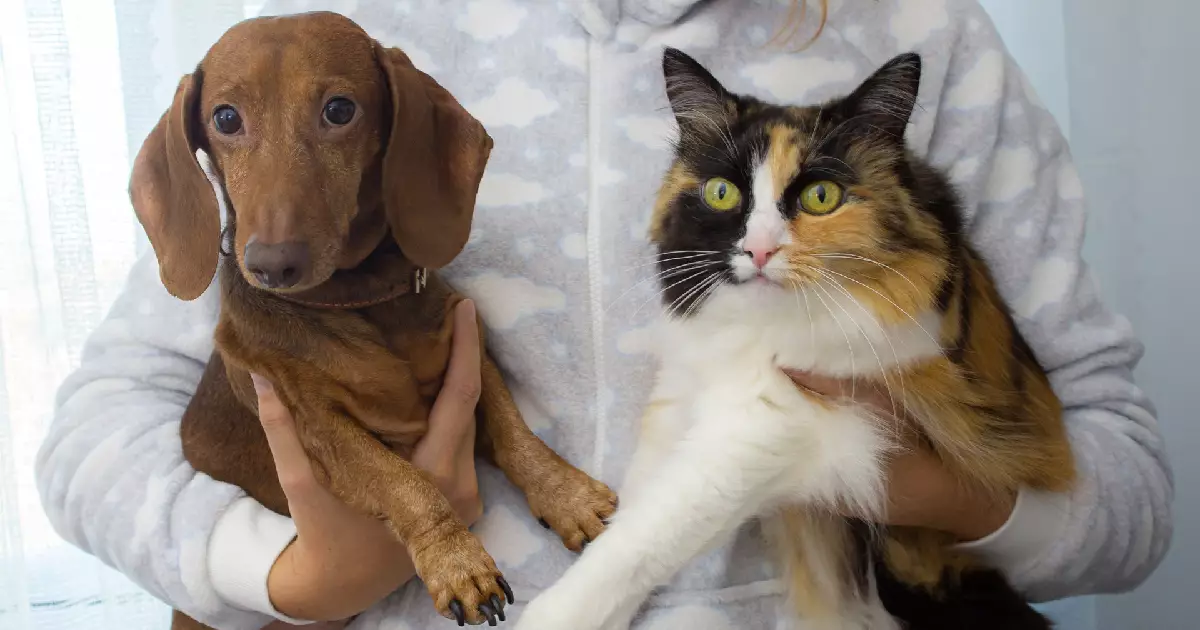The age-old debate surrounding cats and dogs has been fermented in folklore, media, and even everyday conversations. Oftentimes, this rivalry has been painted in stark black and white—cats as aloof, cunning creatures, and dogs as their gullible, enthusiastic counterparts. However, the reality is far more nuanced. As someone who once viewed the world through a binary lens of cat versus dog, my journey from misunderstanding to a more comprehensive understanding serves as a testament to the shifting dynamics of interspecies relationships.
Growing up in a colony of kittens, the tales spun by seasoned felines painted an unflattering picture of dogs. With exaggerated swagger, they regaled us with stories of canines as merciless pursuers, their slobbery mouths poised to devour innocent cats. This childish perception fostered a sense of animosity and fear, igniting playful games where we would scurry around, pretending to evade capture by a dog. Those early notions were heavily influenced by a lack of experience and a skewed narrative. However, life beyond the confined safety of my colony would soon reveal a very different reality.
My understanding of dogs underwent a seismic shift when I found myself residing in a rescue shelter. Initially, my instincts screamed for survival—dogs were noisy, intrusive, and odorous. But as I began interacting with some of the more amiable canines, I found that many were, in fact, gentle souls longing for companionship. It became evident that not all dogs were hot-headed, cat-chasing beasts; rather, many of them were simply misunderstood. They too were searching for love and acceptance in their own ways, a realization that led me to question my long-held biases.
Despite any newfound understanding, it’s crucial to acknowledge the very real instincts that govern both species. For some dogs, the primal urge to chase is an unyielding force, a reminder of their ancestry. Likewise, cats have their own set of instincts that compel them to flee or defend themselves when faced with a perceived threat. This natural instinctual drive creates the potential for misunderstanding, leading to encounters that can be both fearful and aggressive. It’s not a matter of hatred but an inherent survival instinct intricately tied to our evolutionary paths.
While many felines may eventually adapt to coexist with canines, others may forever remain wary due to past traumas. Cats with negative experiences can develop a lasting aversion to dogs, leading to anxiety or defensiveness when encountering them. Inversely, dogs who have had encounter with aggressive cats may carry their own set of fears, which can escalate tension on both sides. Understanding this complexity is crucial. If your pets demonstrate aversion towards one another, it’s essential to respect their boundaries and maintain a safe environment.
With that said, there are always exceptions to these instinctual behaviors. Some cats and dogs find ways to navigate their differences, forming unique bonds built on mutual respect. My own experience with my dog cousin Doug illustrates this well. Initially, our relationship was fraught with tension as Doug eagerly invaded my personal space and resources. However, as time progressed, a camaraderie developed. Doug transformed from an annoying puppy into a trusted companion, proving that with patience and tolerance, peaceful cohabitation is very much possible.
It is vital to recognize that both the nurturing environment and individual character traits shape how cats and dogs perceive each other. The attitudes, behaviors, and reactions of humans play a significant role in influencing the dynamics between these two species. Training, socialization, and individual personalities can soften the apparent rivalry, allowing cats and dogs to coexist harmoniously. Through responsible pet ownership, humans can foster environments that encourage peaceful relationships between pets.
In essence, it is overly simplistic to assert that cats inherently hate dogs. The truth is dictated by a tapestry of instincts, experiences, and perceptions. While some cats may shy away from canines, others find genuine companionship in their fuzzy counterparts. So long as we approach the complexities of these interspecies relationships with understanding and compassion, we may find that a cat and dog can coexist and thrive together. In the end, what both species truly despise are empty food bowls—let’s ensure they’re always filled.

